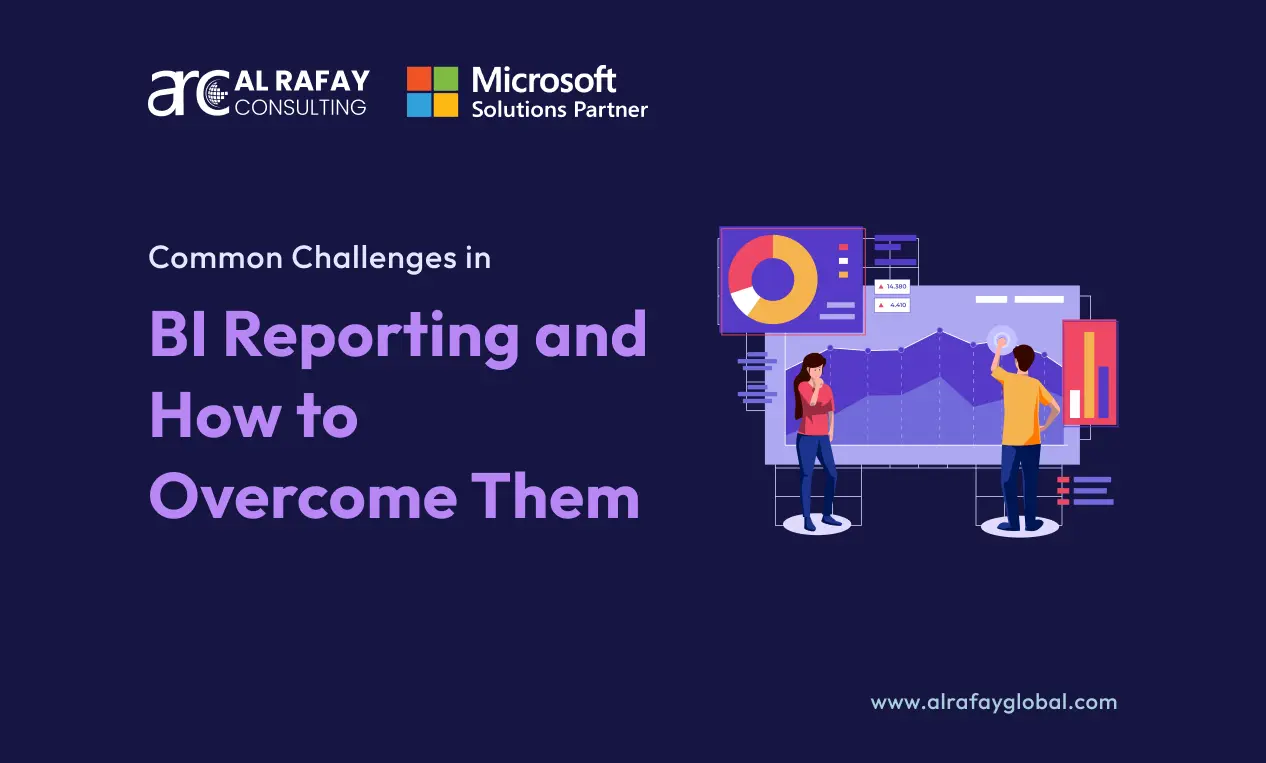Data-driven decision-making has become a cornerstone of competitive advantage. Organizations leverage vast amounts of data to guide strategic initiatives, optimize operations, and enhance customer experiences. Business Intelligence (BI) reporting stands at the heart of this transformation, turning raw data into actionable insights.
The amount of data generation is exploding at an ever faster rate. To tackle these vast data sets and gather useful information from it new BI tools and techniques are also emerging. Despite its critical role, BI reporting is not without its challenges. This blog delves into the common obstacles faced in BI reporting and offers practical strategies to overcome them. By addressing these challenges, organizations can fully harness the power of their data to drive success.
So, let’s start.
Source: https://www.redalyc.org/journal/5718/571861494009/571861494009.pdf
Understanding BI Reporting
BI reporting involves the use of software tools and methodologies to analyze data and present actionable information. The primary purpose of BI reporting is to facilitate informed decision-making at all levels of an organization. This involves creating reports, dashboards, and visualizations that provide insights into various aspects of business performance.
Key Objectives and Benefits of Effective BI Reporting:
Effective BI reporting helps organizations make data-driven decisions by providing timely and accurate insights. It enhances operational efficiency by identifying inefficiencies and areas for improvement, enabling streamlined operations. Additionally, it allows businesses to stay ahead of market trends by analyzing data to identify new opportunities and inform strategic decisions.
According to a report published by Redalyc, companies that invested in BI reporting services and tools saw an ROI of $10.66 for every dollar spent on the BI.
Types of BI Reports:
Operational reports focus on the day-to-day operations of the business, such as sales, inventory levels, and production metrics. Analytical reports delve deeper into data analysis, identifying trends, patterns, and correlations. Dashboards provide a real-time overview of key performance indicators (KPIs) and metrics, allowing stakeholders to monitor performance at a glance. Scorecards track performance against strategic goals and objectives, often using a balanced scorecard approach to measure progress across various dimensions.
Importance of BI Reporting in Modern Enterprises:
The significance of BI reporting in modern enterprises cannot be overstated. With data at the core of business strategies, BI reporting empowers organizations to enhance operational efficiency by identifying bottlenecks and inefficiencies, improving processes, and reducing costs. It also improves customer satisfaction by providing insights into customer behavior and preferences, enabling personalized services and better customer experiences. Furthermore, BI reporting drives strategic growth by uncovering new market opportunities and providing the data-driven foundation necessary to devise and implement effective strategies.
Some common applications of BI reporting are the following:
● Analyzing customer behaviors, buying patterns, and sales trends
● Identifying opportunities to reduce costs
● Measuring, tracking, and predicting sales and financial performance
● Budgeting financial planning and forecasting
● Tracking the performance of marketing campaigns
● Optimizing processes and operational performance
● Improving delivery and supply chain effectiveness
● Web and e-commerce analytics
● Customer relationship management
● Risk analysis
Common Challenges in BI Reporting
Data Quality Issues:
One of the most significant challenges in BI reporting is ensuring high data quality. Poor data quality can lead to inaccurate insights and misguided decisions, ultimately impacting the business’s performance. Inconsistent data, where variations in data formats and standards cause discrepancies, can skew analysis and reporting. Data duplication, which often arises from multiple data entry points and systems, can also distort findings.
Missing data poses another challenge, leading to incomplete analysis and potential misinterpretations. Additionally, outdated information, which fails to reflect current realities, can misguide decision-makers, highlighting the critical need for up-to-date and accurate data.
Integration Challenges:
Integrating data from various sources is essential for comprehensive BI reporting, yet it presents several difficulties. Organizations typically store data in multiple systems, such as Customer Relationship Management (CRM) software, Enterprise Resource Planning (ERP) systems, and other specialized databases.
This diversity of data sources complicates the integration process. Compatibility issues between different systems further exacerbate the problem, as differing formats, standards, and protocols can hinder seamless data integration. Effective BI reporting requires overcoming these challenges to provide a unified and holistic view of the business.
User Adoption:
The success of BI reporting is heavily dependent on its adoption by users across the organization. However, several factors can impede user adoption. Resistance to change is a common issue, as employees may be reluctant to adopt new tools and processes, preferring familiar methods.
Without proper training and support, users may struggle to effectively utilize BI tools, limiting their ability to extract meaningful insights from the data. Ensuring that users are adequately trained and supported is essential for maximizing the benefits of BI reporting.
Complexity in Report Customization:
Creating customized reports that meet specific business needs is another common challenge in BI reporting. Standard BI tools often offer limited flexibility, making it difficult to tailor reports to the unique requirements of different departments and stakeholders. This lack of customization can hinder the ability to derive valuable insights, as generic reports may not address specific business questions or highlight relevant metrics. Organizations need to find ways to simplify the report customization process to ensure that reports are tailored to meet the needs of all users.
Data Security and Privacy Concerns:
Ensuring data security and privacy is a critical aspect of BI reporting. Organizations must implement robust security measures to protect sensitive data from unauthorized access and breaches. Compliance with data privacy regulations, such as the General Data Protection Regulation (GDPR), adds another layer of complexity.
Failure to secure data and comply with regulations can result in significant financial penalties and reputational damage. Therefore, organizations must prioritize data security and privacy to safeguard their information and maintain trust with stakeholders.
Scalability Issues:
As organizations grow and accumulate more data, scalability becomes a significant concern in BI reporting. Handling growing amounts of data can strain existing systems and infrastructure, leading to performance issues and delays in data processing.
Ensuring that BI solutions can scale to accommodate increasing data volumes is essential for maintaining efficiency and responsiveness. Organizations need to invest in scalable BI solutions and regularly review and update their infrastructure to support ongoing growth.
Timeliness and Accuracy:
Ensuring real-time data reporting and maintaining accuracy under time constraints are ongoing challenges in BI reporting. Real-time data processing is critical for providing up-to-date insights and enabling timely decision-making. However, achieving real-time reporting requires robust data processing capabilities and efficient data pipelines. Additionally, maintaining accuracy under time constraints necessitates regular auditing of data sources and processes to ensure that the data remains accurate and reliable.
Strategies to Overcome BI Reporting Challenges
Improving Data Quality:
To address data quality issues, organizations should implement comprehensive data governance policies that define standards and protocols for data entry, storage, and maintenance. Regular data cleaning and validation processes are essential to identify and correct errors, inconsistencies, and duplicates. Utilizing data quality tools can automate these processes and enhance accuracy, ensuring that the data used for BI reporting is reliable and trustworthy.
Effective Data Integration:
Overcoming integration challenges requires the use of advanced ETL (Extract, Transform, Load) tools that streamline the data integration process by extracting data from various sources, transforming it into a compatible format, and loading it into a centralized data warehouse. Implementing data warehousing solutions provides a unified repository for data, enabling seamless integration and analysis. Ensuring interoperability between systems is also crucial, as it allows for smooth data flow and integration across different platforms and applications.
Enhancing User Adoption:
To improve user adoption of BI tools, organizations should provide comprehensive training and resources to ensure that users are well-equipped to utilize the tools effectively. Encouraging a data-driven culture within the organization can also drive adoption, as employees become more aware of the value of data in decision-making. Involving end-users in the BI implementation process, from selecting tools to designing reports, can enhance buy-in and ensure that the tools meet their needs.
Simplifying Report Customization:
Simplifying the report customization process can be achieved by using self-service BI tools that empower users to create and customize reports without relying on IT support. Offering customizable templates and dashboards can also streamline the process, providing users with a starting point that can be tailored to their specific requirements. Providing adequate support and resources for report creation ensures that users have the guidance they need to develop effective and relevant reports.
Ensuring Data Security and Privacy:
To address data security and privacy concerns, organizations should implement robust security measures, such as encryption, access controls, and regular security audits. Regularly updating security protocols is essential to protect against evolving threats and vulnerabilities. Ensuring compliance with relevant data privacy regulations, such as GDPR, is also critical to avoid legal penalties and maintain stakeholder trust. Establishing a comprehensive data security and privacy framework is essential for protecting sensitive information and maintaining the integrity of BI reporting.
Ensuring Scalability:
To handle growing amounts of data and maintain performance, organizations should choose scalable BI solutions that can accommodate increasing data volumes. Utilizing cloud-based BI tools can provide the flexibility and scalability needed to support growth, as cloud platforms can easily scale resources up or down based on demand. Regularly reviewing and updating infrastructure is also essential to ensure that it remains capable of supporting the organization’s data needs and BI initiatives.
Maintaining Timeliness and Accuracy:
Implementing real-time data processing solutions can ensure that data is continuously updated and available for analysis, enabling timely decision-making. Regularly auditing data sources and processes is essential to maintain accuracy and reliability, identifying and addressing any issues that may arise. Automating data updates and reporting processes can further enhance timeliness and accuracy, reducing the risk of errors and delays. By prioritizing these strategies, organizations can ensure that their BI reporting remains accurate, timely, and valuable for decision-making.
A Real-World Case Study of Implementing BI Tools
Let’s take a look at a recent case study in which Al Rafay Consulting helped a REIT company boost its profits and efficiency.
Our experts developed a REIT platform (BI Reporting And Dashboard Platform) for one of our clients BioMed Realty. The software allowed the users to gather real-time data on their properties, such as monthly revenue, occupancy, delinquency rates, and others. This helped BioMed make strategic decisions in their business and increase their profits multifolds.
Future Trends in BI Reporting
AI and Machine Learning Integration:
The integration of AI and machine learning into BI reporting is poised to revolutionize the field. Predictive analytics, powered by machine learning algorithms, can provide forward-looking insights, helping organizations anticipate trends and make proactive decisions. Automated data analysis capabilities can also streamline the reporting process, reducing the time and effort required to generate insights. These advancements are expected to drive more sophisticated and accurate BI reporting, enabling organizations to stay ahead of the competition.
Advanced Data Visualization:
Advancements in data visualization are transforming how organizations interact with and interpret data. Interactive dashboards, which allow users to explore data in a dynamic and intuitive manner, are becoming increasingly popular. The use of augmented reality (AR) and virtual reality (VR) in data visualization is also on the rise, providing immersive and engaging ways to present and analyze data. These innovations are enhancing the accessibility and impact of BI reporting, making it easier for stakeholders to understand and act on insights.
Increased Focus on Data Privacy:
With the introduction of new data privacy regulations and growing awareness of data security, there is an increased focus on data privacy in BI reporting. Regulations such as the GDPR have significant implications for how organizations collect, store, and use data. Ensuring compliance with these regulations is essential to avoid legal penalties and maintain stakeholder trust. Advancements in data security technologies, such as encryption and secure access controls, are also playing a crucial role in protecting sensitive information and ensuring the integrity of BI reporting.
Conclusion
In this blog, we explored the common challenges in BI reporting and provided strategies to overcome them. BI reporting is a dynamic and evolving field, constantly shaped by technological advancements and changing business needs. Organizations must continually adapt and improve their BI practices to stay competitive and make the most of their data.
If you require expert BI Reporting services then you can always rely on Microsoft certified experts at Al Rafay Consulting. We have 10+ years of experience in developing custom business Intelligence report systems for a variety of industries.














